Activated Carbon
Granular & Powdered Forms- High internal surface area
- Rapid diffusion kinetics
- Greater loading capacity
- Customisable particle sizing
- Manufactured by an ISO9001 accredited Quality system
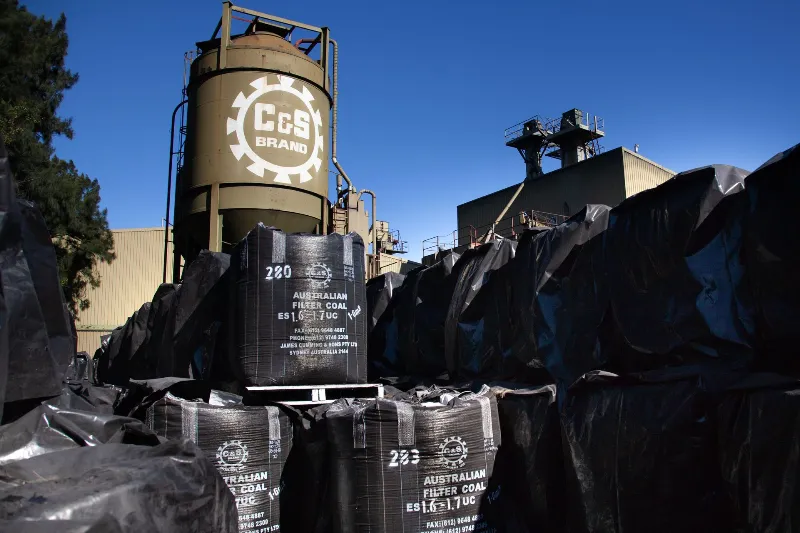
Water filtration ensures the quality and usability of our water resources and is essential for various applications ranging from potable water production to industrial processes and wastewater treatment.
The selection of filter media influences water quality, providing grounds for comparing the performance of C&S Brand Australian Filter Coal and mono-media sand.
Both dual-media filtration and mono-media filtration have distinct benefits and advantages, depending on applications and desired outcomes.
C&S Brand Australian Filter Coal is the optimal choice when aiming for high-quality water and a high-performance setup.
At James Cumming & Sons, we have been market leaders in utilising bituminous coal for eco-friendly water filtration and wastewater purification since the 1980s. Now, let’s explore different filtration configurations and assess their performances.
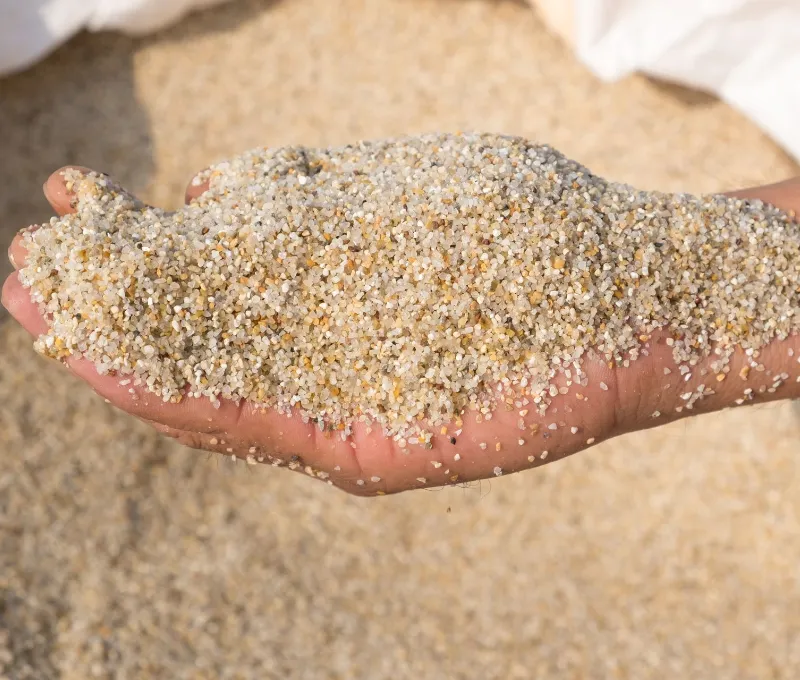
A mono-media sand filter utilises uniformly graded filter sand with a consistent shape and size. Industries such as water treatment plants, swimming pool facilities and agricultural irrigation commonly employ these filters for water filtration, pool water maintenance, irrigation systems and more.
They allow water to pass through a bed of the graded filter sand, physically trapping suspended particles and removing impurities as the water passes through.
During this process, the largest particles settle at the bottom while the smallest stay on the top. This uneven dispersion limits the utilisation of media depth, concentrating filtration at the surface. Consequently, the filter operates in shorter cycles, requiring frequent backwashing.
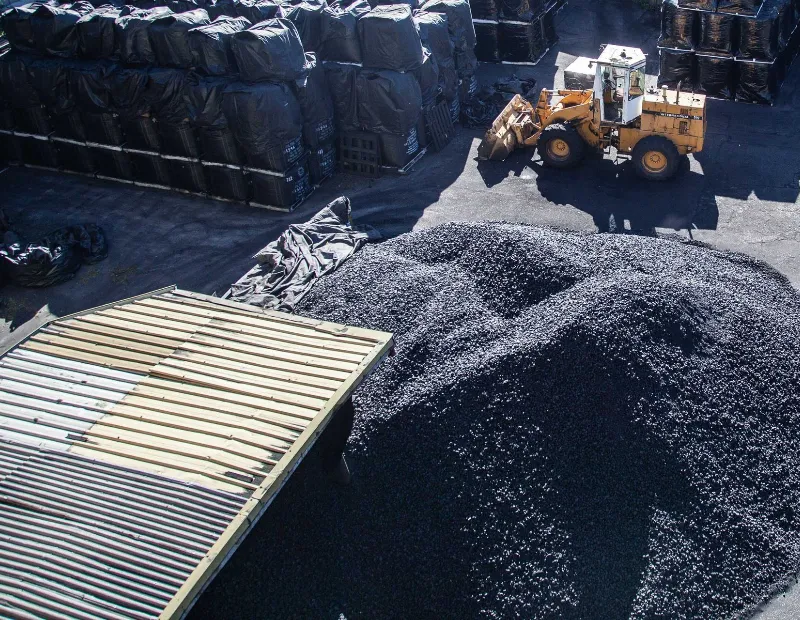
Unlike a mono-media sand filter, a dual-media filter incorporates two distinct types of filter media for enhanced water filtration efficiency. This second media is typically anthracite or Filter Coal. At James Cumming & Sons, we’ve identified a select local bituminous coal that not only outperforms imported anthracite coal but also consistently meets or exceeds the AWWA B100 standards.
The filter bed’s structure consists of a support layer for additional stability, often composed of garnet or silica, overlayed by anthracite or Australian Filter Coal.
As water passes through, the support layer provides a structure for the filter media on the top of the bed, while the Filter Coal captures finer particulates and turbidity.
The layered configuration not only enhances filtration quality but also minimises media bed clogging, reducing backwashing frequency.
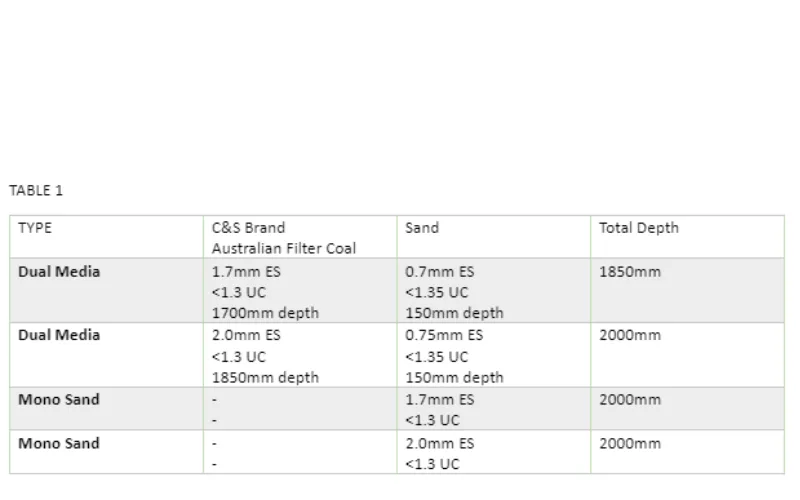
Conducting the most recent pilot plant, prototype and full-scale studies using mono sand and dual-media beds with their typical sizes detailed in Table 1. The investigation involved filter rates ranging between 14 – 30m/hr.
As part of the study, dual-media beds incorporated coarse C&S Brand Australian Filter Coal over a small layer of sand, and researchers evaluated backwash requirements for both mono and dual-media setups.
The C&S Brand Australian Filter Coal is lighter (specific gravity of 1.45) than various overseas anthracite(s). Consequently, it necessitates lower backwash rates compared to anthracite of the same size, typically around 10% less.
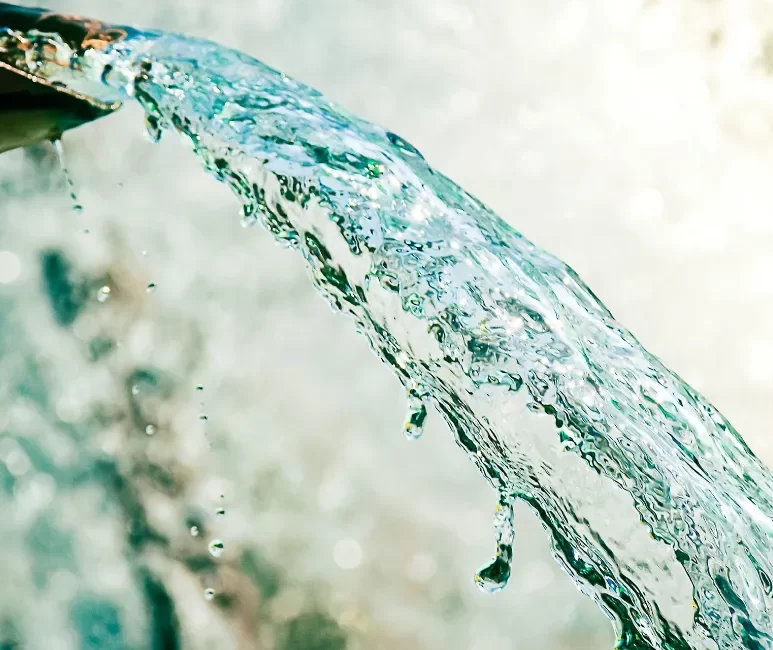
Not surprisingly, the dual-media filter consistently outperformed the mono-media sand filter with run lengths and throughputs 50% to 100% greater.
The fine sand layer beneath the coarse C&S Brand Australian Filter Coal was key in reducing the tendency for filter breakthrough. This resulted in a substantial 30% to 40% decrease in the required filter aid (non-ionic polymer) dosing. Additionally, the fine sand layer increased the capture of fine particles and improved the removal of giardia and cryptosporidium cysts.
Furthermore, the lower specific gravity led to reduced filter media losses, exemplified by an annual rate of 0.25% at the Dungog Water Treatment Plant (WTP), as conducted independently by Hunter Water Laboratories.
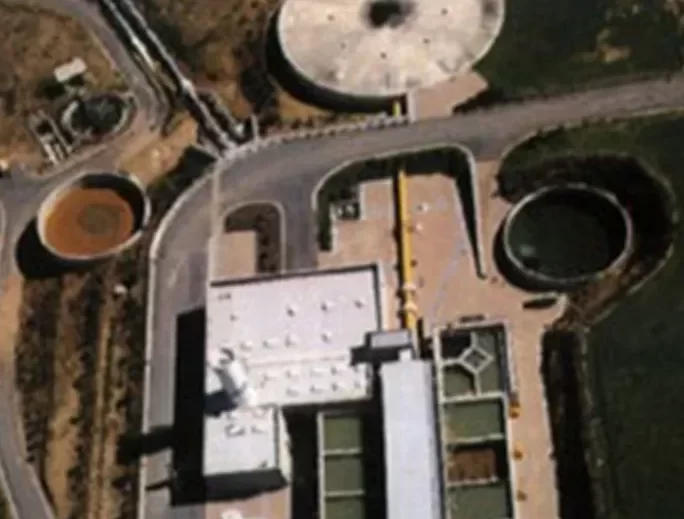
The reduction in the uniformity coefficient from 1.4 to 1.3 also increased filter run times by approximately 10%. Dual-media filters attained UFRVs in the 400 – 500m³/m³ range.
Recent prototypes demonstrated a 100% UFRV upturn compared to mono-medium sands, both in clean and dirty water, with lower filter aid doses. This efficiency improvement is notable for effective sizes from 0.8mm to 0.9mm and above, particularly under heavy filtration loads.
We have over 115 years of expertise in pioneering the use of Australian Coal for industry.
We work with countless industries, including potable water, wastewater, desalination pretreatment, glass manufacturing, steel works, iron foundries and more, to deliver safe, customised water filtration solutions.
To learn more about the difference between C&S Brand Australian Filter Coal and mono-media sand, contact a member of our expert team today.
for your Filter Coal, Activated Carbon and Carbon additives











James Cumming
319 Parramatta Road,
Auburn NSW 2144 Australia

© Copyright 2025 James Cummings & Sons Pty Ltd. Website by Brilliant Digital
The C&S Brand™ logo are trademarks of James Cumming & Sons Pty Ltd.
ABN 98 000 453 378